18 web push notification best practices to ace engagement and conversions
Updated on May 5, 2020
Web Push Best Practices to Ace Engagement and Conversions
Web Push Notifications are a popular communication channel used by businesses to reach out to prospective customers, engage them, and drive conversions. The notifications help deliver important promotional and non-promotional content from brands to customers.
In this blog, we will explore:
- The best practices for sending Web Push Notifications.
- How marketers can use this channel to boost engagement and online conversions.
If you are new to push notifications, you can also check out Insider’s blog about web push notifications and come back to this article.
We’ve analyzed billions of web push notifications sent by our partners to find what practices result in higher Click-Through-Rates (CTRs) and conversions. Using these insights, we’ve compiled some of the top best practices to ensure you score high on your web push notification success rate.
You’ll definitely see an uplift in user engagement and conversion rates if you incorporate these concepts in your campaigns. The more insights you gain into web push notifications, the more you will understand your users, their behavior and their preferences.
- Opt-in Prompt Customization
Push notification click-through rate (CTR) is a critical metric as it determines how many users got interested in your notification and clicked on it. However, to make a success of this strategy, you must first get an opt-in from users, that is, you have to get them onboard. When it comes to web push notifications, getting the opt-in right makes all the difference between driving online conversions or getting blocked out by users. With Google’s recent Quieter Permission UI having come into effect, the way marketers send web push notifications has changed.
- Silent UI
Most web browsers are moving towards offering a quieter permission UI for notifications. This means there will be no default opt-in screen that will pop up. The notification icon will draw the user’s attention in more subtle ways. Does this mean your opt-in and engagement rates will be affected? Yes. However, marketers can work around this by making their web push strategy more contextual and focus on timely and relevant opt-ins. (See the list of browsers that support push notifications)
- Two-Step Opt-In
Using a two-step opt-in is one of the best practices to get users to give consent to web push notifications. It not only improves user experience but offers more context and understanding to users on why they should give permission to receive notifications. It also helps prevent websites from being forced to show a quieter permission prompt if too many users have opted out of the typical native prompt in Google Chrome.
You can use a two-step opt-in template to nudge users to understand how they can benefit from notifications. Once the user allows, you can trigger a pop-up that’ll guide them to manually opt-in for notifications.
- Delayed Opt-In
Most users either block or permanently opt-out of getting notifications if they’re asked for permission as soon as they land on a website. This bad timing leads marketers to show quieter permission prompts. One of the best ways to get opt-in is by improving user experience. Add a delay and trigger your opt-in screen only after a user has spent a certain amount of time on your website. This will help reduce instant opt-outs and increase the user experience of your website.

- Bell Icon
The bell icon is an interactive and assistive button that floats on your website and allows users to manage their notification permissions. Upon clicking this icon, users can either trigger the opt-in screen or an instruction screen that guides them on how to opt-in.
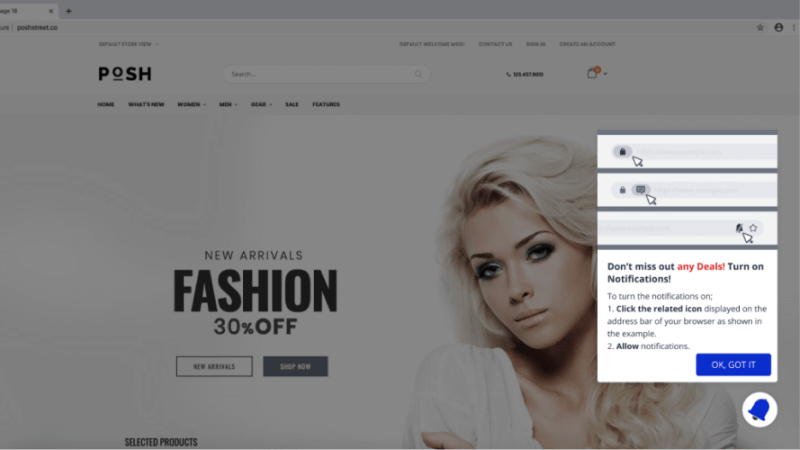
- Reminder Template
A lot of users might get automatically enrolled for quieter permission UI. In such a case, it will take them some time to understand how to opt-in again to receive web push notifications. You can use an opt-in reminder template to prompt users and guide them through the process of enabling permissions and opting to receive push notifications. This template can also be used to remind those users who have already blocked the opt-ins.
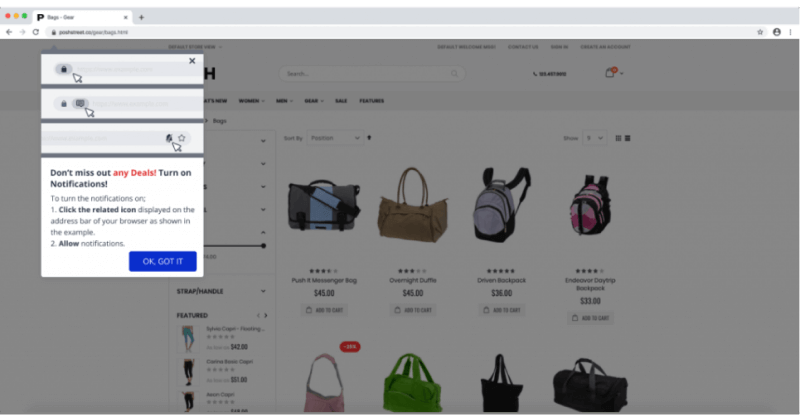
- Seek permission on the right page
It is important for marketers to seek opt-in permission on the right page – that is, on the page which has the highest traffic and also engages the users the most. For example, if a company seeks opt-in permission on the home page of its website, while user engagement is maximum on its product page, then push notification subscribers will be low. Marketers must detect where most of the traffic is headed and ask for push permission on these pages. These could be the homepage, success page, or product page.
2. Optimize Your Web Push Notification Send Time
Timing is critical to boost your push notification success rate. If a notification is not sent at the right time, it may lead to low CTRs and user opt-outs. The two things you need to ensure you’ve taken care of before sending notifications are:
- Time Zones
Users often complain about receiving notifications at odd times, like late at night or early in the morning. No one likes their phone buzzing in the middle of the night when they’re asleep. Create a segment based on user time zones and ensure your notifications are received by them at the time they are comfortable with.
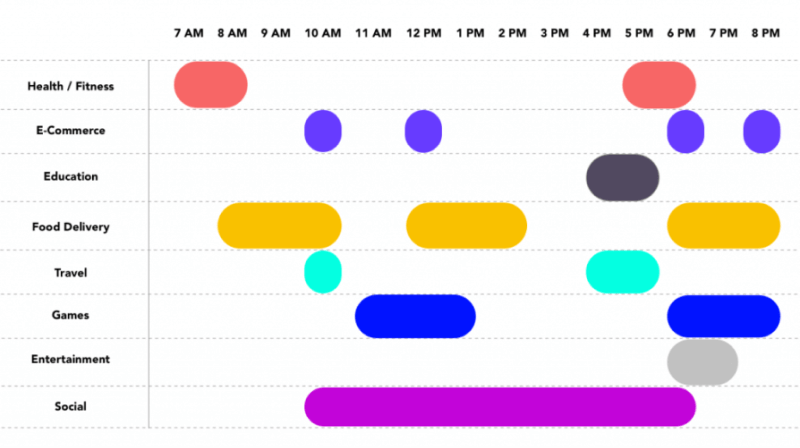
- Periods of High Activity
As a marketer, you want to ensure that your push notifications engage your customers and receive high CTRs. Every customer has a daily routine and it is difficult to send your notification at a time when it is noticed and clicked right away. Understanding the high activity time of your target audience helps set the right time to send your web push notifications for higher engagement.
By optimizing your send times, you can target users at a time when they are most likely to be active and will click on your notifications.
- Use InTime Option
InTime sends notifications to a user at a time that is best suited for her, within a select period. This is done by collecting historical information on a user’s online activity patterns. Using this information, the tool calculates the best time of the day or week when a push notification should be sent. This is the time when the probability of the user opening the notification is the highest.
There is an algorithm behind how this tool works. It uses a predictive/machine learning script to calculate the per device activity of a user and thus arrives at the highest probability time to open a notification. However, there are some users who don’t have the best time to contact. They receive the notification immediately.
3. Target Audience Segmentation
Segmenting your audience plays an important role in creating the right marketing strategy. This essentially means dividing your user group into target groups, according to various criteria. With this approach, you can work separately with each consumer group, catering to their interests. Categorize your users and send relevant notifications based on their actions or attributes. To get the maximum benefit out of your web push notification campaign, your segments should be based on:
- User Attributes such as gender, city, country, age, device, OS, etc.
- Browsing history of users
- Purchasing history of the users
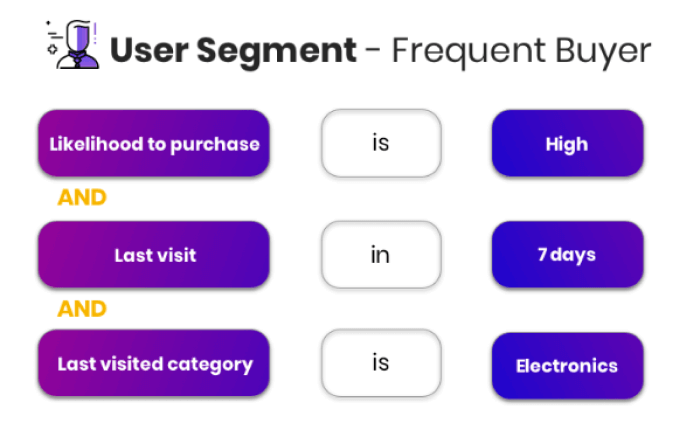
Smart Tip: Leverage predictive segmentation of your target audience to know which user is likely to convert and engage more with your notifications.
4. Localize Your Notifications
Localization takes the personalization game to a whole new level. Incorporate location-based targeting to deliver a personalized user experience.
Use smart segments to target users by country and send web push notifications in their browsing or native language. This localization is mission-critical for boosting CTRs and building high customer loyalty.
5. Keep It Short and Simple
Always keep in mind that your users receive a lot of push notifications in a day, depending on the number of apps installed in their device. It is easy for your push notifications to get lost in this influx.
One way to cut through the noise is to keep your notification titles and descriptions short and simple. The longer the title and content, the lower the push notification click-through rates. Ideally, you should restrict your notification length to 5-8 words to ensure maximum engagement and get a high number of people to land on your website or product page.
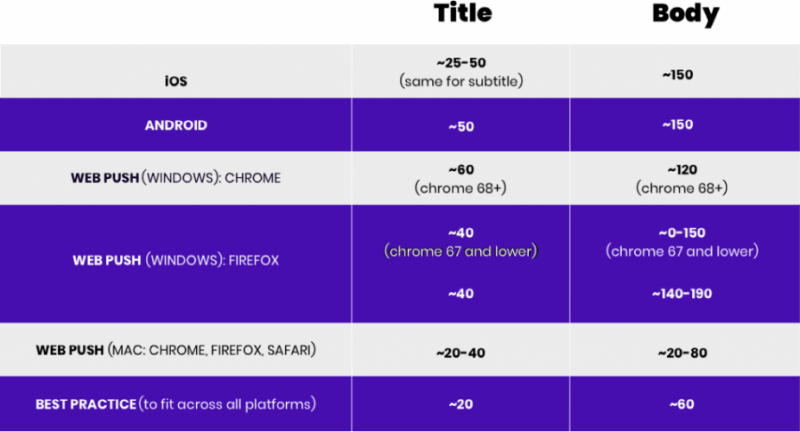
6. Use Images and Rich Media
A picture is worth a thousand words. Users might not always click on notifications. But a message that comes with an added image often records better results in achieving campaign goals.
Adding images to notifications makes them more striking and gives users a pre-context of what they are going to be clicking on. It also gives them a better idea about the purpose of the notification.
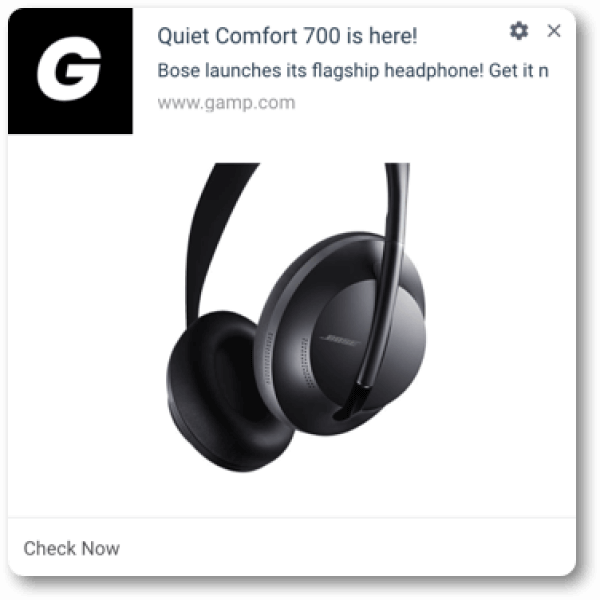
7. Use the Power of Emojis
Who doesn’t love an emoji? They’ve gained immense traction in both personal and professional communication forms in recent years.
Seeing those tiny, interest-inducing emoticons is known to drive up a user’s urge to click on a push notification. Emojis add a visual aesthetic to the accompanying text, make it more appealing, and can influence a user’s decision to check out a notification.

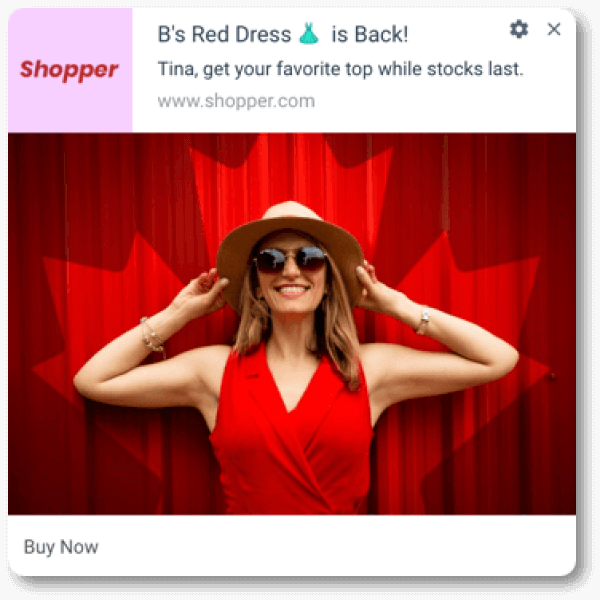
8. Use Precise CTAs
The best way to measure immediate success is by tracking your push notification click-through rate (CTR). If your users are not clicking on the push notifications, then it’s difficult to achieve your marketing goal. One way to boost CTRs is by incorporating a call to action (CTA) button into the notifications.
CTAs play a vital role in marketing. As users consume content, they need to be prompted to take action that tie up to your goals. Giving users a specific goal to complete helps boost engagement and conversion rates.
Some examples of clear CTAs are:
- Buy now
- Read now
- Take me there
- I’m in
- Show the coupon
- I want a discount
9. Personalize Your Push Campaigns
It is no point knowing and understanding your user’s activity and behavior if you don’t make use of the data in your marketing campaigns. When creating a push notification, make sure the message grabs the user’s attention.
Use smart segments and custom attributes to craft personalized campaigns that will resonate with users and result in a click back to your website. Personalization can be achieved by setting up custom attributes. These will allow you to add dynamic elements to your notifications, such as a user’s first name, product image, and product page link.

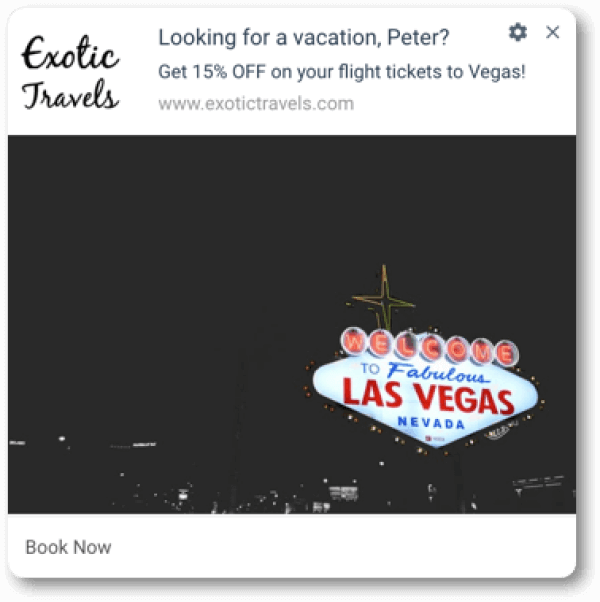
10. Using Recommendation Attributes
Product recommendations have proven to boost average order value by 50%, increase store revenue by 300%, and conversions by almost 150%, according to Bigcommerce. In addition to being a powerful tool for increasing revenues, product recommendations also deliver a seamless browsing experience that customers now expect as a new normal.
Recommending products through web push is a smart way to engage users and lead them towards conversion in their purchasing lifecycle. Use recommendation attributes such as product name, category, image, and URL to send smart recommendations, increase user engagement and boost conversion rates.
11. Instill Urgency for Faster Conversions
It’s human nature to respond and act quickly on a marketing message if there is a sense of urgency or scarcity around a product. Add this urgency into your notifications by mentioning how long a product or sale will last. It increases open rates and maximizes conversions.
Notification titles that instill urgency and excitement are more likely to be clicked and gain high CTRs. You can also add a coupon code too to further grab the user’s attention.

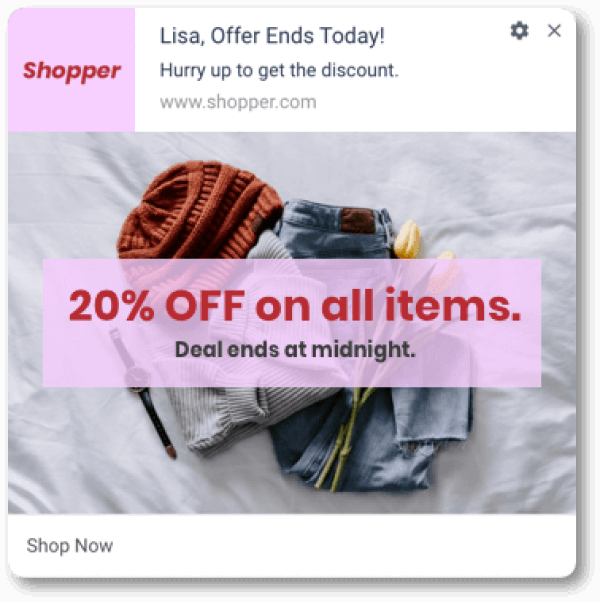
12. Deep Linking Web Push Notifications
Deep links are common on websites. They are an extension of the domain URL. For instance, if your website domain is example.com, this link will take users to the homepage of the website. The deep-link (say, http://example.com/path/page) will take them to a particular page within the same website.
Deep linking push notifications helps increase engagement rates by 2X, and encourages users to visit a website 2X as frequently, as compared to users who visited a push notification without a deep link.
13. Always A/B Test Your Web Push Notifications
Test various elements of your web push notifications using A/B Tests. A/B Testing has proven to be one of the best ways to improve metrics like CTR or conversion rates. Don’t rely on guesswork when it comes to your web push subscribers: test the various headlines, action buttons and body text to see what works best.
For optimum results from A/B Testing, change one element at a time. For example, test two unique headlines but keep the rest of the notification the same. If one notification performs better, you can say with certainty that it was the headline change that worked. If you test numerous elements at once, there will be no way of knowing what resulted in an increase in performance.
No matter how well your web push notifications perform, there is always room for improvement. A/B Tests will increase campaign effectiveness over time.
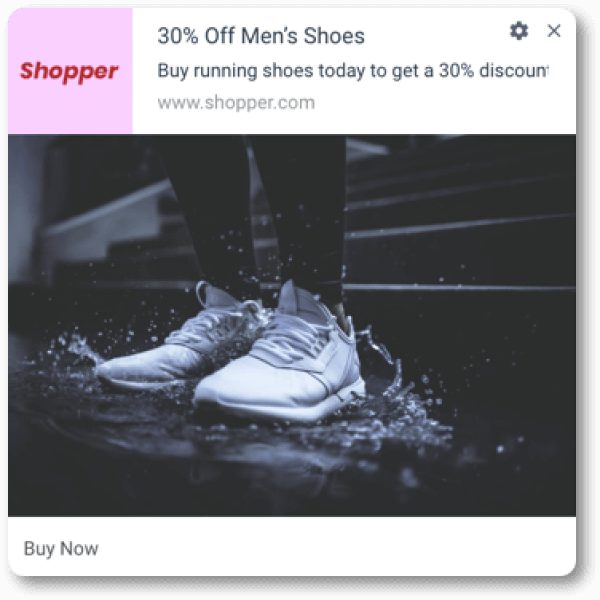
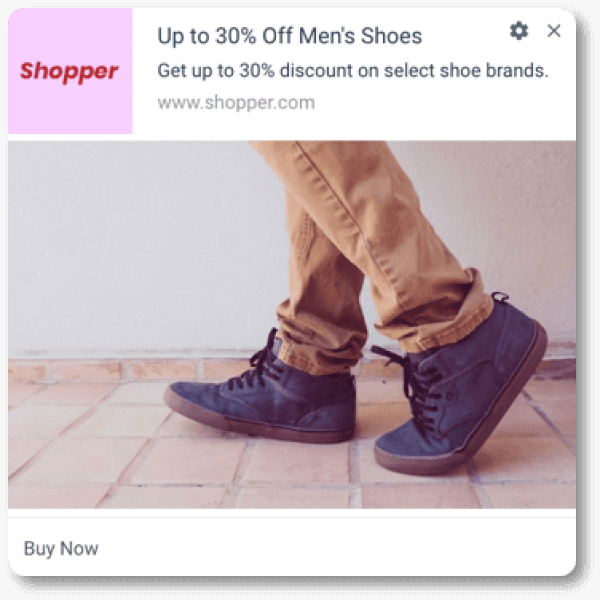
14. Send the right message to the right user, using Recommended Web Push Notifications
Should you send bulk push notifications to your users or segmented push notifications? This is a question that marketers always find difficult to answer. If you send a bulk push, you will be reaching out to your entire user base. This increases your chances of generating better revenue. But on the flip side, bulk notifications have lower open and conversion rates. Also bombarding your users with notifications might put them off and lead them to block your messaging.
Segmented push notifications, on the other hand, provide better user experience, higher conversion rates but lower revenue.
What if marketers could avail the best of both these notification categories. This can happen by segmenting users and sending web push notifications with personalized product recommendations. This way they can reach their entire user base and send them messages that are of relevance to each individual user. This gives marketers the twin advantage of engaging with all their customers, sending appropriate notifications that will grab their attention, and nudge them to convert. The result too is a twin bonanza: higher revenues and greater conversion rates.
The two primary goals of recommended web push notifications:
- Increase conversions and conversion rates by sending personalized notifications.
- Provide users with notifications that are relevant to them. This will generate interest in the message and propel customers to discover more about the product, thus increasing engagement and click-through rates.
15. Inform price-sensitive users about price drops
Price-sensitive shoppers often wait for the best price deals before purchasing a product. To check and compare prices, they visit a website multiple times, to keep tabs on price drops or discounts. Price Drop notifications allow marketers to effectively target this customer segment and create alerts based on changes in a product’s pricing.
Let’s say, a price-conscious shopper wants to buy a smartphone from an online portal. He is expecting prices to drop, as a new version of the phone is to be launched. He visits the product page 5 times in 7 days, and thus comes into the marketing radar of the portal. When there is a change in the phone price, he receives a price drop notification, immediately goes online and makes his purchase.
Price drop notifications work well in the eCommerce, travel and hospitality industries. It allows marketers to increase conversions, reduce the visitor-to-buyer journey as well as provide customers with maximum value for their money.
16. Inform users when a product is back in stock
Imagine a user is hunting for a product he needs urgently. He lands on a product page only to find that it is out of stock. A sure-shot purchase journey is disappointingly cut short – this is something no marketer will want. To counter such a situation, marketers can drive back conversions by sending Stock Web Push notifications that notify visitors once an out-of-stock item, that they have shown interest in, is back on the shelves.
This notification is very well suited for eCommerce retailers, especially on big sale days like Black Friday, Cyber Monday and Singles’ Day, when companies often face a problem of running out of inventory. A user’s activity is tracked on a product page, by keeping tabs on how many times he visited the page.
For instance, a user wants to purchase a pair of headphones, which are out of stock. The customer has already made a purchase decision and visits the page 3 times in 2 days to check if the product is back in stock. This clearly indicates to the company that the user is waiting to buy the headphone once it’s available. An in-stock notification is sent to the user once the product is back on sale. It results in an immediate conversion for the retailer.
Stock Web Push notifications result in a high purchase rate for retailers, as users are already in the conversion stage of the funnel. It’s also a great way to communicate timely updates about product availability.
17. Use Web Push APIs to help customers track their purchase
Most push notifications are aimed at nudging users to make a purchase or meet any other marketing goal. Web Push API, on the other hand, uses data from a company’s own back-end systems – be it transactional data, flight information or stock fluctuations – to inform users about what’s happening at the back-end of a purchase. This could be a product delivery status, flight delay or even the release of a new book.
Let’s take an example. A user has booked a trans-Atlantic flight, to travel from London to New York. On the departure date, he receives a notification from the airline, saying, “Your flight is scheduled to depart in 6 hours. Are your tickets, visa and passport in place?”
Or let’s take an example of a publishing company that has just published a lifestyle-related news article on its website. The company can trigger its Web Push APIs to send a notification to readers who follow its lifestyle section, “Check out the new lifestyle article we’ve just published!”
An API (Application Programming Interface) is a set of functions that allow developers to access the features and services of a third-party application. However, Insider’s Web Push API allows partner developers to send push notifications from their own systems using Insider technology. With this tool, marketers can target a specific user group and trigger notifications without having to use the Insider panel.
Web Push API is a unique way for companies to engage and retain their customers. It can be used by companies across the board – publishing, finance, eCommerce or travel.
18. Don’t bombard your users with notifications. Set a frequency cap
If marketers are using an advanced web push funnel structure and often send bulk pushes, they run the risk of overloading their users with notifications. This can have a negative fall-out. Users may get frustrated with the incessant numbers of notifications beeping in their phones and may end up either blocking them or may stop responding to the notifications. In the long run, this will decrease the push notification click-through rates for companies.
Frequency capping is an ideal way for marketers to limit the number of daily notifications they send to their customers. It can be set to any number of notifications and any time frame.
For instance, a major eCommerce retailer sells a range of products – from groceries, furniture to electronic gadgets. To cover its entire product range and inform users about the various offers and discounts, the company has to send scores of notifications every day. This is not a suitable strategy. So it sets a frequency cap of 2 push notifications per user, per day. If a customer has already received these, then she won’t receive any more messages even if she is in the eligible segmented category to receive a notification for another product.
Check out our complete guide on push notification software!
Final Takeaway
Always remember, there’s no one rule that fits all. Whatever your push notification strategy, it is critical to keep your users’ requirements in mind. Also, constant experimentation is a winning idea. Keep assessing your campaign titles, content and identifying the right keywords that will resonate with your users.
The goal of creating a highly engaging and converting push notification is like a moving target. What works today may not work tomorrow. With frequently changing policies and user-first movements, you need to constantly stay updated and keep in touch with your users’ evolving needs, behavior, and interests.
To know more about how you can optimize your web push notification campaign performance to achieve higher conversion rates, get in touch with us today.
Frequently Asked Questions
Before sending out push notifications, make sure to get your opt-in strategy right. Use a two-step opt-in process rather than bombarding users with permission requests the moment they land on your site. This approach improves user experience and gives users clear context on why they should allow notifications.
Beyond opt-ins, focus on these proven tactics:
Timing is everything. Send notifications when users are most active, not at 2 AM when they’re sleeping. Leverage time zone segmentation and analyze your audience’s high-activity periods to maximize engagement.
Keep it short and impactful. Restrict notification titles to 5-8 words maximum. The longer your message, the lower your click-through rates will be. Remember, users receive dozens of notifications daily – you need to cut through the noise.
Personalize relentlessly. Use smart segments and custom attributes to craft messages that resonate with individual users. Generic blast notifications perform poorly compared to targeted, relevant content.
Set frequency caps. Don’t bombard users with notifications. Limit yourself to 2-3 notifications per user per day, maximum. Overloading leads to blocks and opt-outs.
The golden rule? Always put user experience first. What works today may not work tomorrow, so constantly test and optimize your approach.
Web push notifications are highly effective when executed properly. Here’s what the data reveals:
Engagement rates significantly outperform email. While email open rates hover around 20-25%, well-optimized push notifications can achieve click-through rates of 10-15% or higher. Personalized notifications drive substantial revenue impact. Product recommendations through push notifications can boost average order value by 50% and increase store revenue by up to 300%.
However, effectiveness depends heavily on your strategy. Poorly timed, irrelevant notifications will quickly lead to opt-outs and blocked permissions. The key is quality over quantity. Fewer, highly targeted notifications will always outperform bulk messaging.
The terms are often used interchangeably, but there are important distinctions:
Web push notifications are messages sent directly through web browsers to users who have opted in on your website. They appear on desktop or mobile devices even when the browser isn’t actively open. These work across Chrome, Firefox, Safari, and other modern browsers.
Push notifications is the broader umbrella term that includes:
– Mobile app push notifications (iOS/Android apps)
– Web push notifications (browser-based)
– Desktop push notifications (operating system level)
Key differences in functionality:
Web push notifications require browser opt-in, not app installation. It works across different devices and browsers, limited to web-based interactions. On the other hand, mobile app push notifications require app installation and permission. You can leverage device features (location, camera, contacts). It gets higher engagement rates due to the app relationship.
A good click-through rate for push notifications varies significantly by industry, but here are the benchmarks you should aim for:
Industry averages:
– Ecommerce: 4-8% CTR is considered good, 10% plus is excellent
– Media/Publishing: 2-5% is typical, more than 7% is strong performance
– Travel: 5-12% depending on notification type (booking confirmations perform the highest)
– Finance: 3-6% for general notifications, higher for account-specific alerts
Check out our exclusive product tours



















